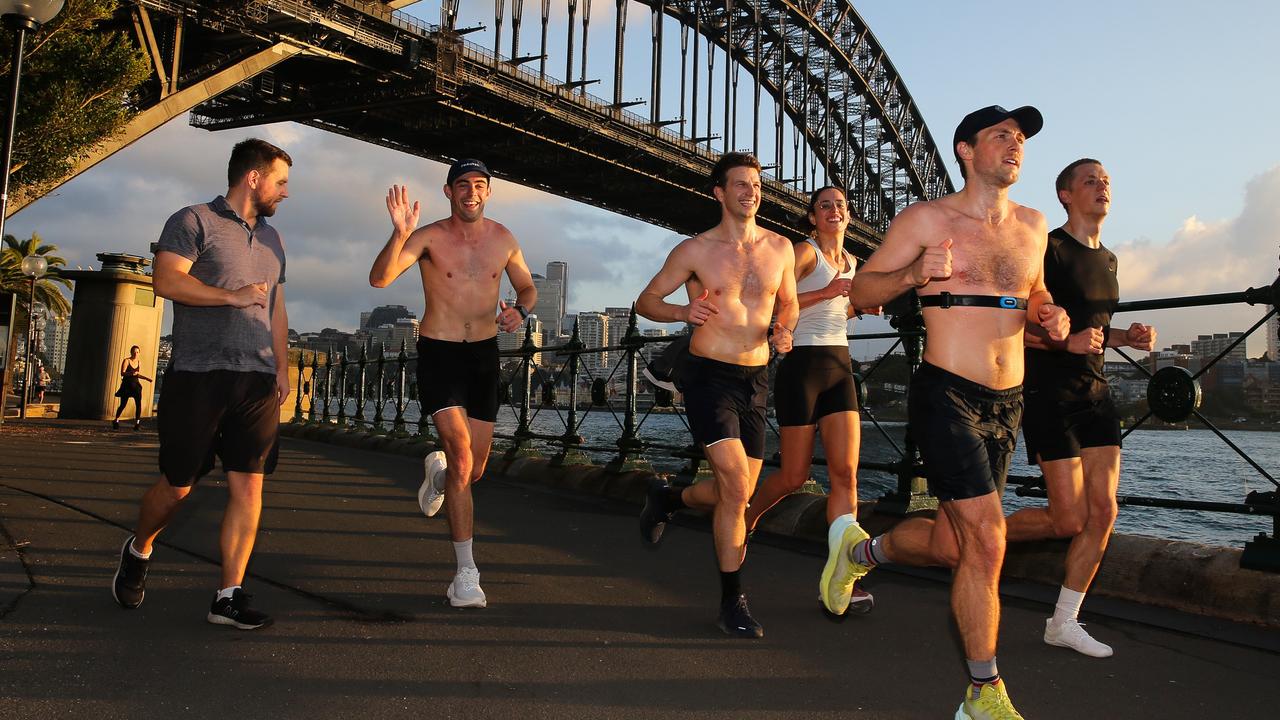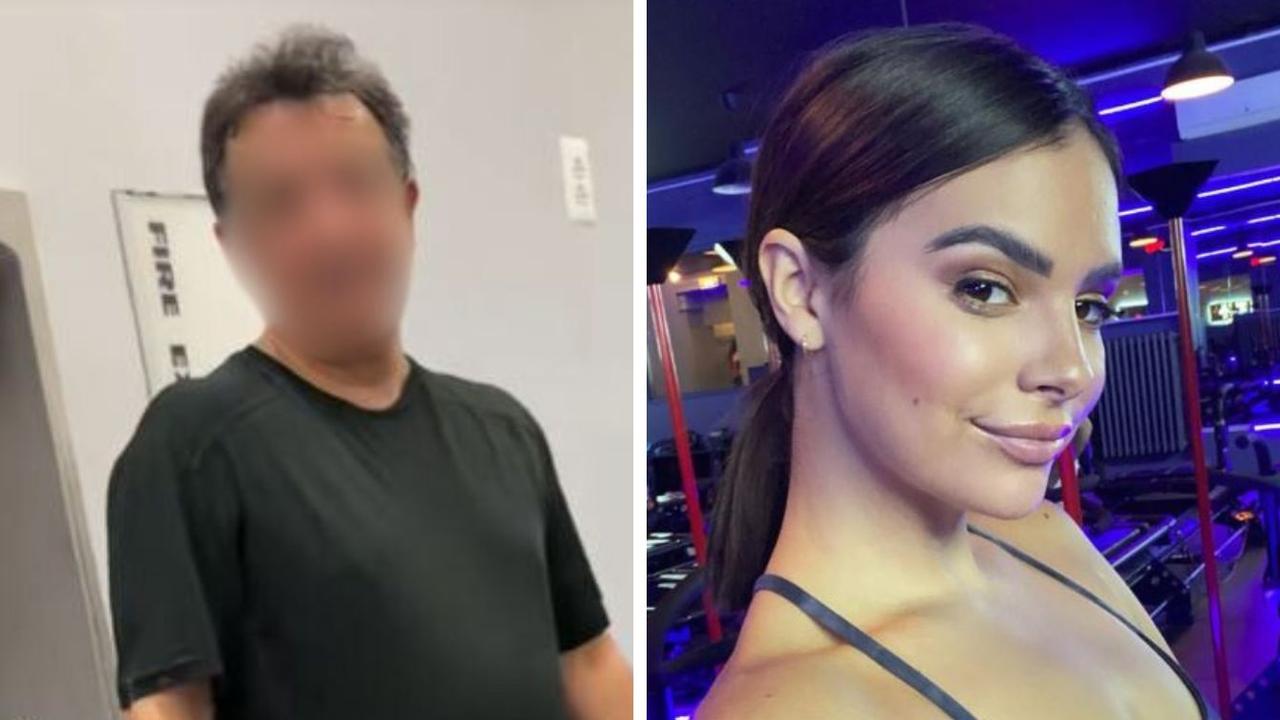Three young liver transplant recipients meet to launch DonateLife Week
Zoe Gallacher had a lifesaving liver transplant days before first birthday. Two years on, this selfless gift has allowed her to be normal kid – and meet two girls with similar stories.
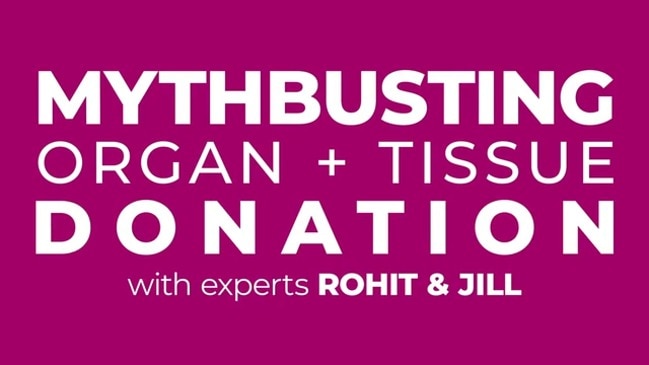
For Zoe Gallacher’s first birthday, she got to leave ICU with her new liver.
It was an up moment in the “rollercoaster” that had been her short life since she was diagnosed with life-threatening infant liver condition biliary atresia.
There had been plenty of downs – Zoe, her parents, Catherine Williams and Todd Gallacher, and sister Ella had been regularly in and out of the Royal Children’s Hospital in Melbourne, Kasai surgery aimed at draining her liver effectively failed, and her belly “kept blowing up” as she waited for a new liver.
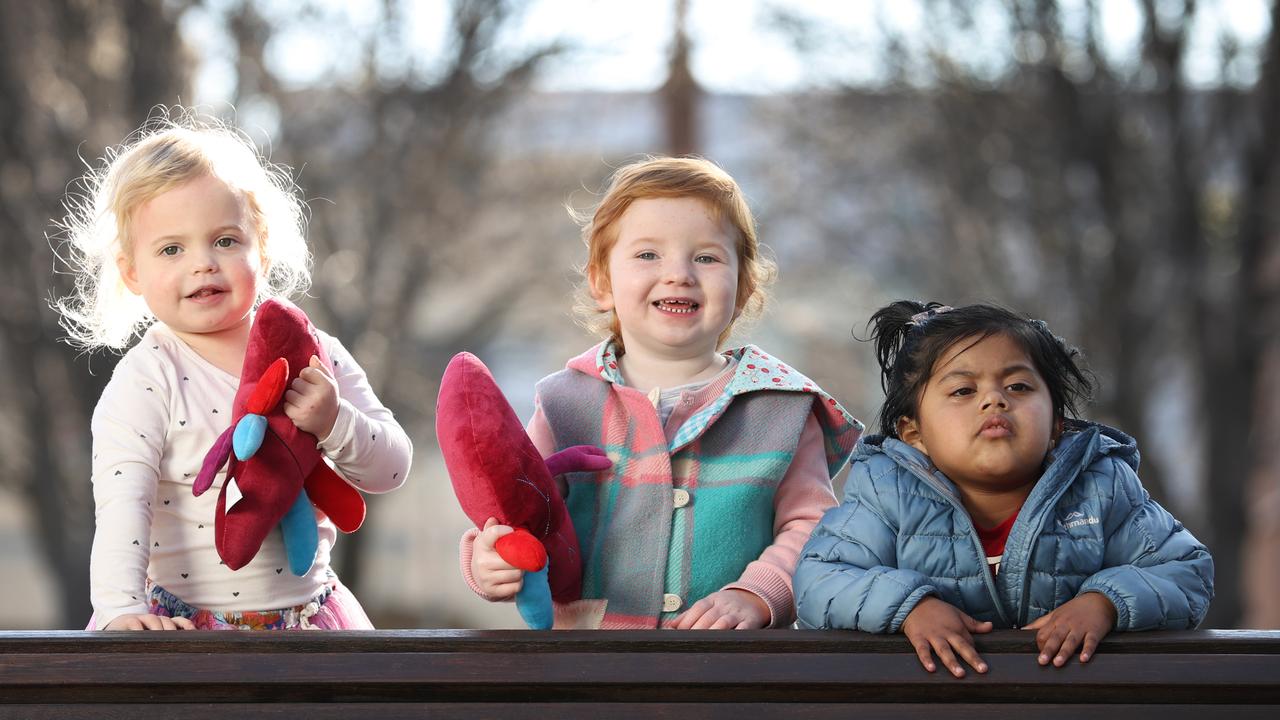
But the day Zoe left ICU after her transplant was “an amazing day”.
“We had a party in ICU, and then another party on the Cockatoo Ward,” Ms Williams said.
“We could see she had a bit of personality back, a bit of Zoe back.”
Now, about two months after Zoe’s third birthday, she has had another special day: meeting two other girls who had liver transplants at the same hospital far too early in their lives, Ashleen Kainth, 2 and Riley Swander, 3.
RELATED: Organ donation myths preventing lifesaving registrations in Australia
DonateLife plea for 100,000 Aussies to register as organ donors
‘I was terrified’: Australians share what it’s like to wait for a new organ
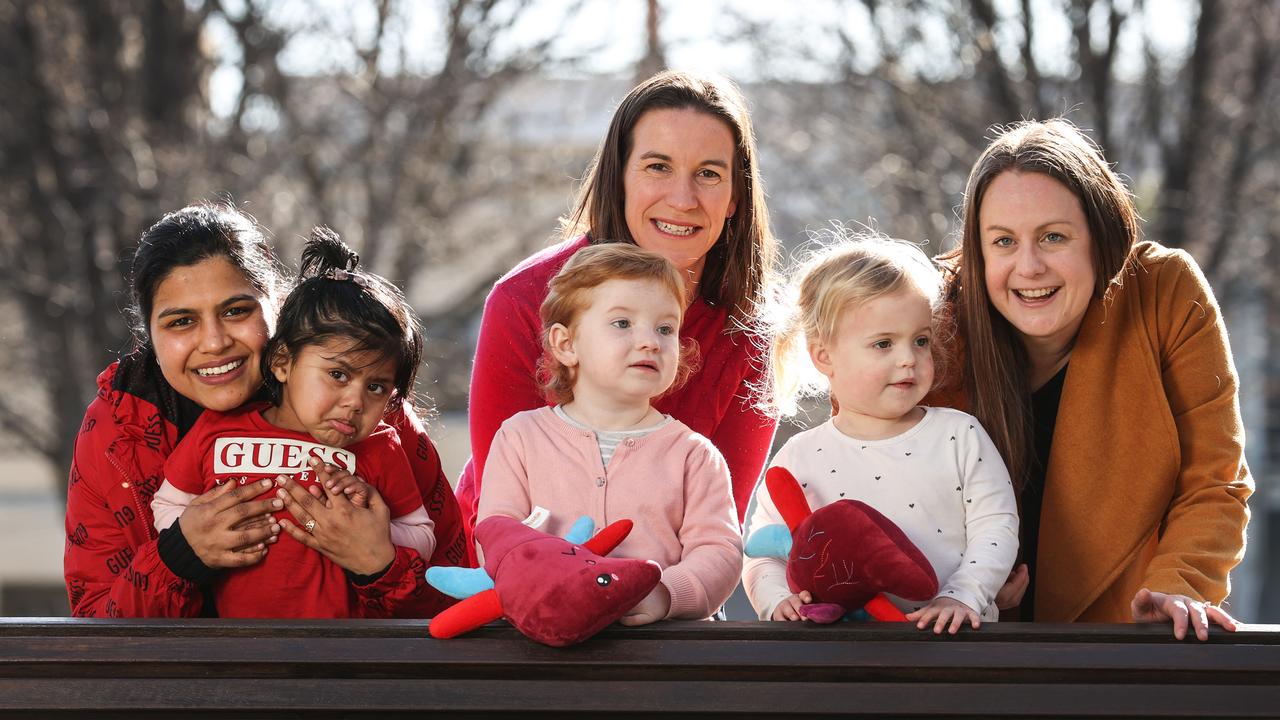
Their parents – Amandeep Kaur Kainth and Gurdeep Singh Kainth, and Katrine and Rob Swander – tell similar stories of offering up their own livers as their daughters’ conditions worsened while on the waitlist.
“There wasn’t really any hesitation – this is what she needs, let’s do it,” Ms Swander said. Ms Kainth added: “Any parents would for their kids.”
Ashleen was diagnosed with rare genetic disorder citrullinemia type 1 on her fourth day of life, after she started having seizures on day three. She was transplanted in October 2021 and then had about seven more minor procedures to deal with complications.
“It was a really hard life,” Ms Kainth said of the pre and post-transplant period. “We would often spend one day at home, then one week in hospital. We had to measure all her food.
“(But) everything is going good now. Next month, she turns three, and we are planning a big party.”
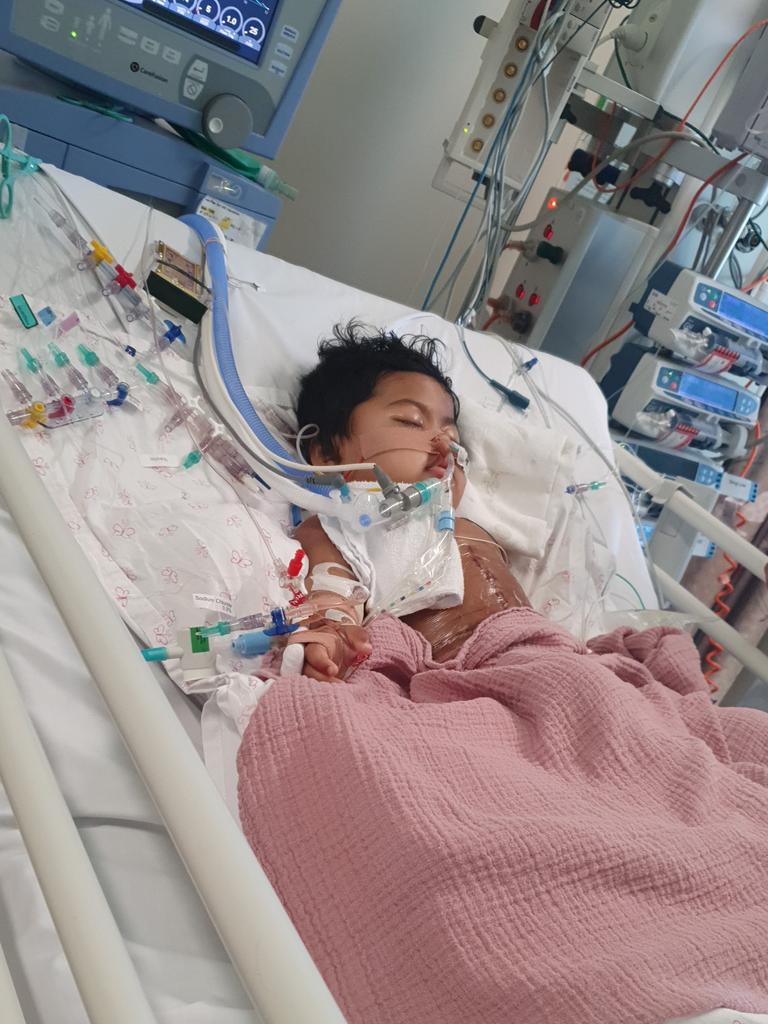

Riley’s condition, biliary atresia, saw her undergo Kasai surgery at 32 days old. She had her first transplant in late 2020 and when that failed, a second in early 2021.
“After the failure of the first transplant, when we had a lot of hope that it was going to save her life, it made the second operation a lot harder,” Ms Swander said.
“We still remember seeing the faces of the surgeons after that operation and knowing in that moment that she had done better and it was OK. We felt overwhelming relief.”
Riley also had a tough recovery, but has since made great strides. “Seeing these little milestones we never knew she would get the chance to have, we’re so grateful,” Ms Swander said.
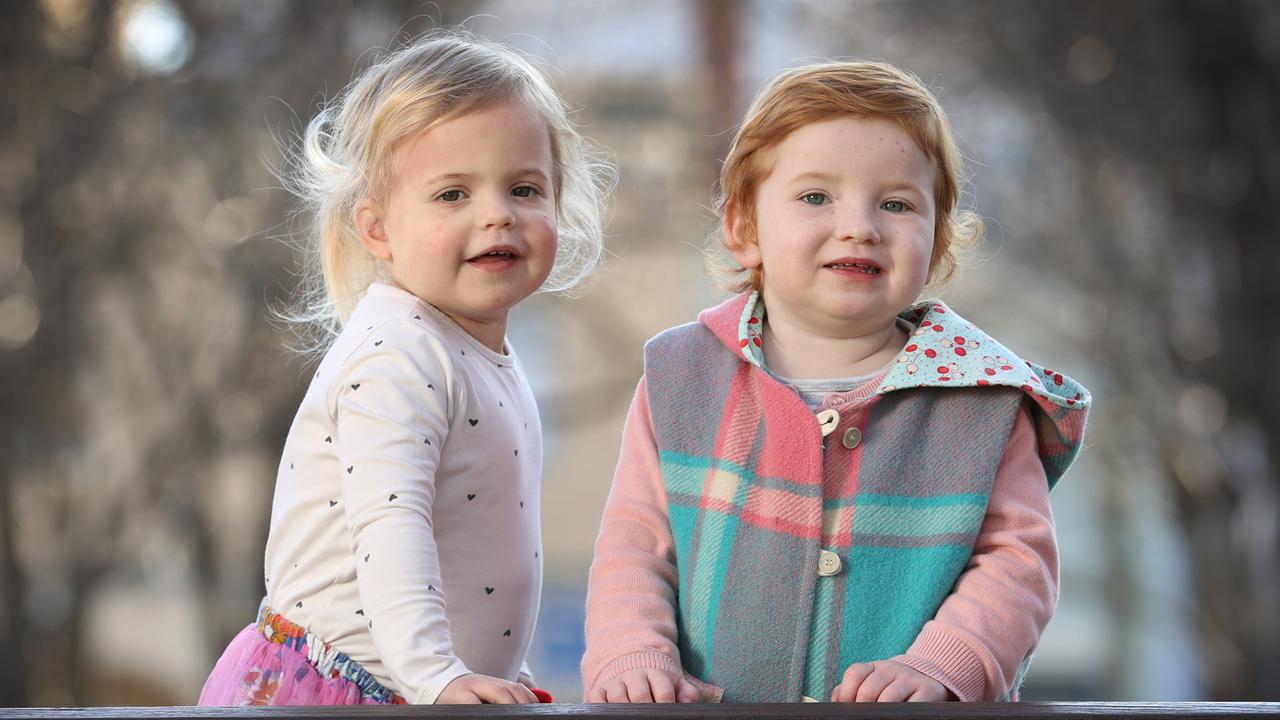
All three girls are now enjoying relatively normal childhoods, attending or preparing to attend childcare – and for Ashleen in particular, enjoying new foods she couldn’t eat beforehand. “She loves yoghurt and noodles,” Ms Kainth said.
The mums all urged the 13 million Australians who were yet to register as organ and tissue donors to take the 60 seconds required to do so.
“You can’t understand how much it will change a life,” Ms Williams said.
“Our little girl was really in trouble. Now here she is, a brilliant, cheeky three year old who’s going to do amazing things.”
Organ donor registrations on the up, but more desperately needed
Organ and tissue donor registrations have almost doubled in Australia year-on-year – but new data shows parts of the nation are lagging behind in making the potentially lifesaving pledge.
About 350,000 Aussies joined the Australian Organ Donor Register in 2021 – the first year DonateLife ran the Great Registration Race, aimed at boosting donor numbers – marking a whopping 87 per cent increase from the year prior.
Registrations more than doubled in NSW, Tasmania and the ACT, and rose by more than 85 per cent in Victoria, Queensland and the Northern Territory.
But despite this, only South Australia (73 per cent) and Tasmania (50 per cent) have achieved DonateLife’s target of having 50 per cent of the eligible population registered in every state and territory.
If this target is met, DonateLife projects about 200 more Australians will receive a lifesaving or life-changing transplant each year.
MORE: If tragedy strikes, knowing a loved one’s wishes is a precious gift
How SA’s lung transplant team defied global fatality rates during Covid
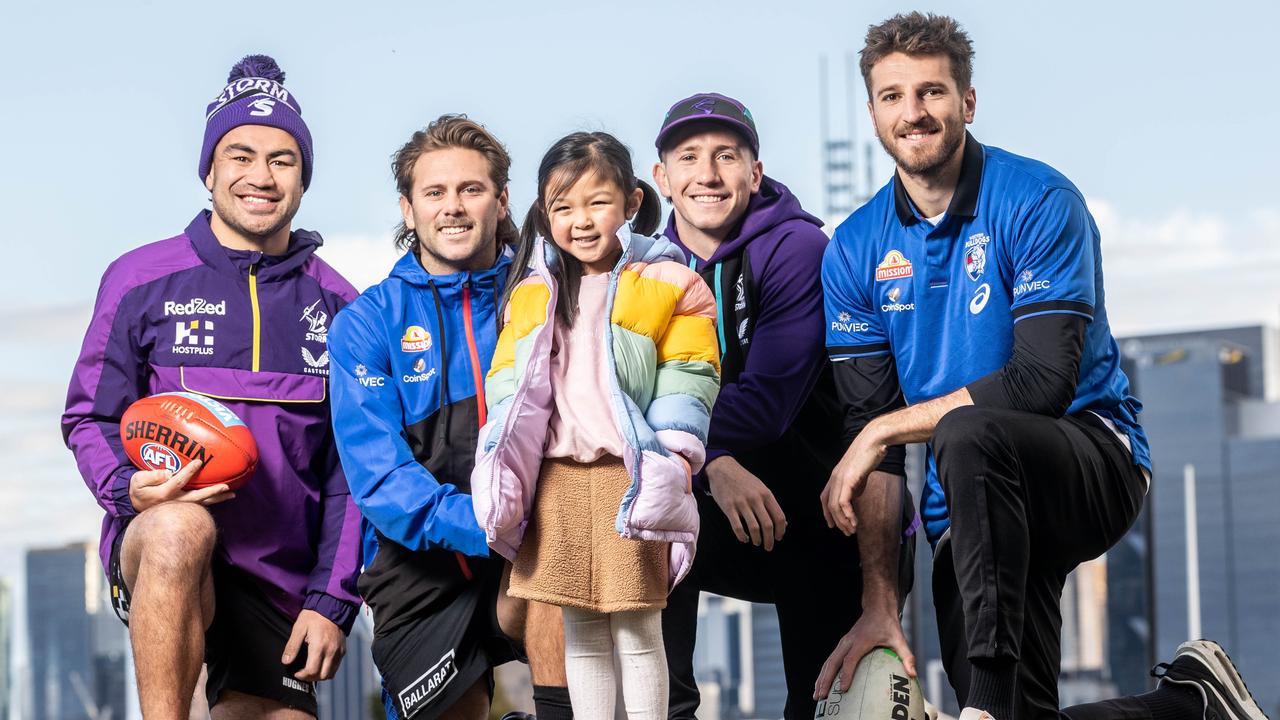
In 2021, 1174 people received organs from 421 deceased donors. While registrations were up, these numbers fell 9 per cent and 7 per cent respectively from the year prior.
“Families say yes to organ donation nine out of 10 times if their loved one is registered,” Organ and Tissue Authority chief executive Lucinda Barry said, noting the number dropped to four from 10 when they didn’t know their relative’s wishes.
“That’s why we do such a big push for registrations, why we have DonateLife Week, to raise awareness of the importance of registering.”
The 2022 Great Registration Race kicked off earlier this month with the aim of encouraging at least 100,000 people to take the one minute required to join the register. It runs throughout July and August, ramping up in DonateLife Week from July 24-31.
Anyone aged 16-plus can register as an organ and tissue donor – even those who are elderly or unhealthy for any reason, including that they drink, smoke or have had a disease like cancer or Covid, those who have not have a Covid vaccination, or those who follow the major religions.
Registering only takes 60 seconds and can be done via donatelife.gov.au, the Medicare app or the MyGov website.
“There will be millions of Australians visiting MyGov to do their tax return who have the opportunity to register in less than a minute while they’re there,” Ms Barry said.
Registrations in Australia’s states and territories
South Australia is leading the nation for registrations, with more than half the eligible residents in all but one region pledging to become organ and tissue donors.
New figures from Services Australia – released to kick off DonateLife Week – show a resounding nine out of 10 eligible residents have joined the register in coastal town Robe. Nine further local government areas (LGAs) had registration levels of 80 per cent or more, headed by Roxby Downs and Kangaroo Island.
The state’s largest metropolitan council area, Onkaparinga, recorded the highest total volume of registrations at almost 114,000.
Ms Barry largely put SA’s high rates down to the fact residents could still register when they applied for or renewed their driver’s license. This was no longer the case in the other states and territories.
Only the sparsely-populated Anangu Pitjantjatjara region fell short of reaching the minimum 50 per cent registration rate DonateLife is striving to reach across all states and territories.
In NSW, at least half the eligible population in 31 LGAs were registered at the end of last year, but pockets of western Sydney were falling behind.
Small mid-north coast town Bellingen topped the state with 55 per cent, followed by affluent Mosman and the Blue Mountains region, both at 54 per cent.
On the flip side, fewer than one in five eligible residents of Fairfield, Cumberland, Strathfield, Liverpool and Canterbury-Bankstown had registered.
The Queenscliffe region is home to Victoria’s highest proportion of registered donors, at 48 per cent, while fewer than one in 10 eligible residents have registered in Brimbank and Greater Dandenong in outer Melbourne.
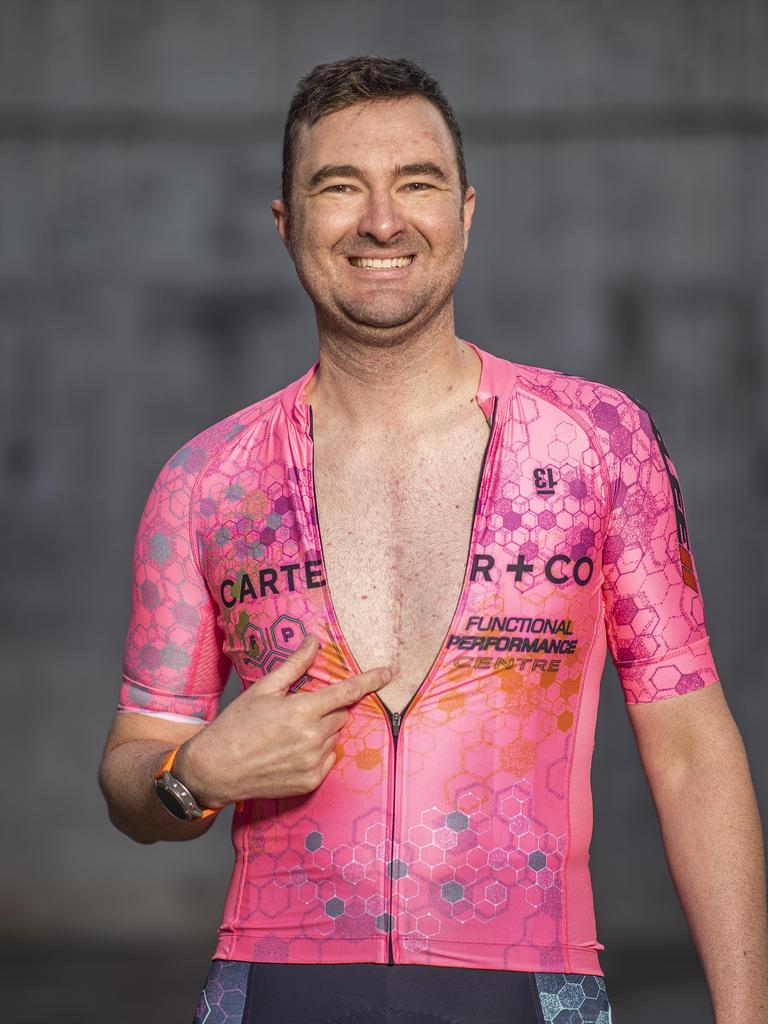
Rates were also low in Wyndham (10 per cent), Hume, Melton and Whittlesea (all 11 per cent).
Greater Geelong had Victoria’s highest volume of registrations at almost 67,500. The Mornington Peninsula and Casey recorded more than 40,000 registrations each – but this only captured 13 per cent of the latter’s total adult residents.
In Queensland, lifestyle hot spots Noosa, the Sunshine Coast and Gold Coast have been identified as lifesaver havens.
With 38 per cent of eligible residents on the register, Noosa was only beaten by tiny regions Barcoo (44 per cent) and Bulloo (42 per cent) in the race for the state’s highest proportion of registrations.
The Services Australia data also showed a 34 per cent rate in the Sunshine Coast at the end of 2021, equating to more than 99,000 registrations. The Brisbane and Gold Coast LGAs had the state’s highest total volume of registrations at more than 317,000 and 161,000 respectively.
But all of Queensland’s top LGAs fell below DonateLife’s 50 per cent target.
In Tasmania, at least a third of eligible residents in all 29 LGAs captured in Services Australia’s research had registered.
The West Coast region had the state’s highest proportion of residents on the register, at 56 per cent, while Brighton had the lowest, at 36 per cent. King Island, Hobart, Clarence and Kingborough also had rates of 50 per cent or more.
But despite more than 2600 Northern Territory residents registering in 2021 to mark a 94 per cent increase from the year prior, the territory is lagging behind the rest of the nation.
Darwin had the highest proportion of eligible residents on the register at 15 per cent, equating to almost 10,500 registrations. It was followed by Litchfield (13 per cent), Alice Springs, Coomalie and Palmerston (all 12 per cent).
The remaining 11 LGAs had registration rates below 10 per cent.
Ms Barry said the remoteness of some of these communities, and the fact Territorians had never been able to register as organ and tissue donors via their driver’s license, had contributed to the shortfall.
“In all the other jurisdictions, apart from the ACT, you used to be able to register on your license and a number of those registrations have gone across on to the Australian Organ Donor Register,” Ms Barry said.
She said the OTA and DonateLife were working to raise registration rates in Australia’s Indigenous regions, as well as and culturally and linguistically diverse areas.
“Our focus is making sure we’re able to deliver the key messages in a way that’s culturally appropriate,” Ms Barry said.



